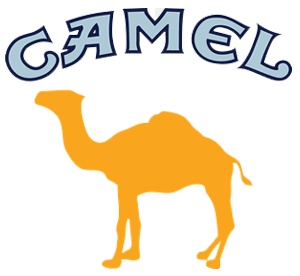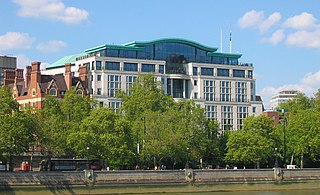
Grand Prix motorcycle racing is the highest class of motorcycle road racing events held on road circuits sanctioned by the Fédération Internationale de Motocyclisme (FIM). Independent motorcycle racing events have been held since the start of the twentieth century and large national events were often given the title Grand Prix. The foundation of the Fédération Internationale de Motocyclisme as the international governing body for motorcycle sport in 1949 provided the opportunity to coordinate rules and regulations in order that selected events could count towards official World Championships. It is the oldest established motorsport world championship.

Camel is an American brand of cigarettes, currently owned and manufactured by the R. J. Reynolds Tobacco Company in the United States and by Japan Tobacco outside the U.S.

British American Tobacco p.l.c. (BAT) is a British multinational company that manufactures and sells cigarettes, tobacco and other nicotine products including electronic cigarettes. The company, established in 1902, is headquartered in London, England. As of 2021, it is the largest tobacco company in the world based on net sales and the third largest seller of vapes in the UK.

Marlboro is an American brand of cigarettes owned and manufactured by Philip Morris USA within the United States and by Philip Morris International outside the US except Canada where the brand is owned and manufactured by Imperial Tobacco Canada. Marlboro's largest cigarette manufacturing plant is located in Richmond, Virginia.
West is a German brand of cigarettes, currently owned and manufactured by Imperial Brands.

Massimiliano "Max" Biaggi is an Italian former professional Grand Prix motorcycle road racer who achieved six World Championships. With four 250 cc road race titles and two in World Superbikes, he is one of only two riders to score championships across both disciplines.

Alexandre Barros is a Brazilian former professional motorcycle road racer who is a 7-time 500cc/MotoGP race winner and also a race winner in Superbike World Championship. After a long Grand Prix career, in 2006 he moved to the Superbike World Championship. He returned to MotoGP for 2007, but retired by the end of the season.

Frederick Burdette Spencer, sometimes known by the nickname Fast Freddie, is an American former world champion motorcycle racer. Spencer is regarded as one of the greatest motorcycle racers of the early 1980s.
Fortuna is a spanish brand of cigarettes, currently owned and manufactured by the Spanish company Altadis, a subsidiary of Imperial Tobacco. Fortuna is Spanish for “fortune” or “luck”.

The 1998 Grand Prix motorcycle racing season was the 50th F.I.M. Road Racing World Championship season.

The 1980 Grand Prix motorcycle racing season was the 32nd F.I.M. Road Racing World Championship season.

The 1999 Grand Prix motorcycle racing season was the 51st F.I.M. Road Racing World Championship season.

The 2001 Grand Prix motorcycle racing season was the 53rd F.I.M. Road Racing World Championship season.

The South African motorcycle Grand Prix was a motorcycling event that had been part of the Grand Prix motorcycle racing world championship, held intermittently from 1983 to 2004.

The Austrian motorcycle Grand Prix is a motorcycling event that is part of the FIM Grand Prix motorcycle racing season from 1971 to 1997, and then again from 2016 onwards. The event is due to take place at the Red Bull Ring until at least 2025.
Pons Racing was a motorcycle and auto racing team owned by the British company Pons Racing UK Limited. The team principal is former 250 cc world champion, Sito Pons. In motorcycle road racing world championships, Pons has fielded riders such as Alex Barros, Max Biaggi, Loris Capirossi and Sete Gibernau. In auto racing, his team won the 2004 World Series by Nissan championship with driver Heikki Kovalainen.

Peter Stuyvesant is a brand of cigarettes currently owned by British American Tobacco and manufactured by the American Cigarette Company. In Australia and New Zealand, the brand is manufactured by Imperial Tobacco. The cigarette brand is named after Petrus Stuyvesant, Director General of New Netherland, later New York State, New Jersey, Delaware and parts of surrounding states.
Grand Prix motorcycle racing sponsorship liveries have been used since the late 1960s, replacing the previously used national colours. With sponsors becoming more important with the rising costs in the motorcycle CC classes, many teams wanted to be able to display the logos of their sponsors as clearly as possible.


















